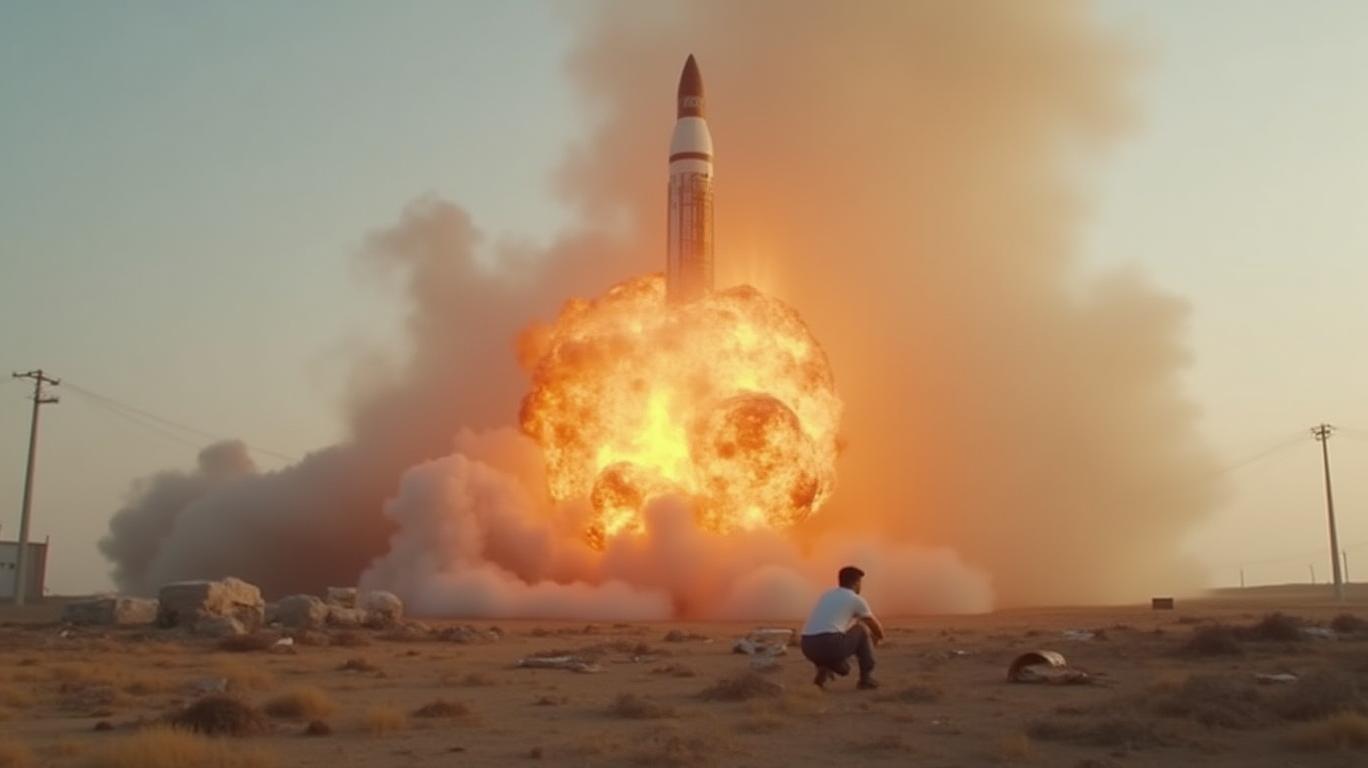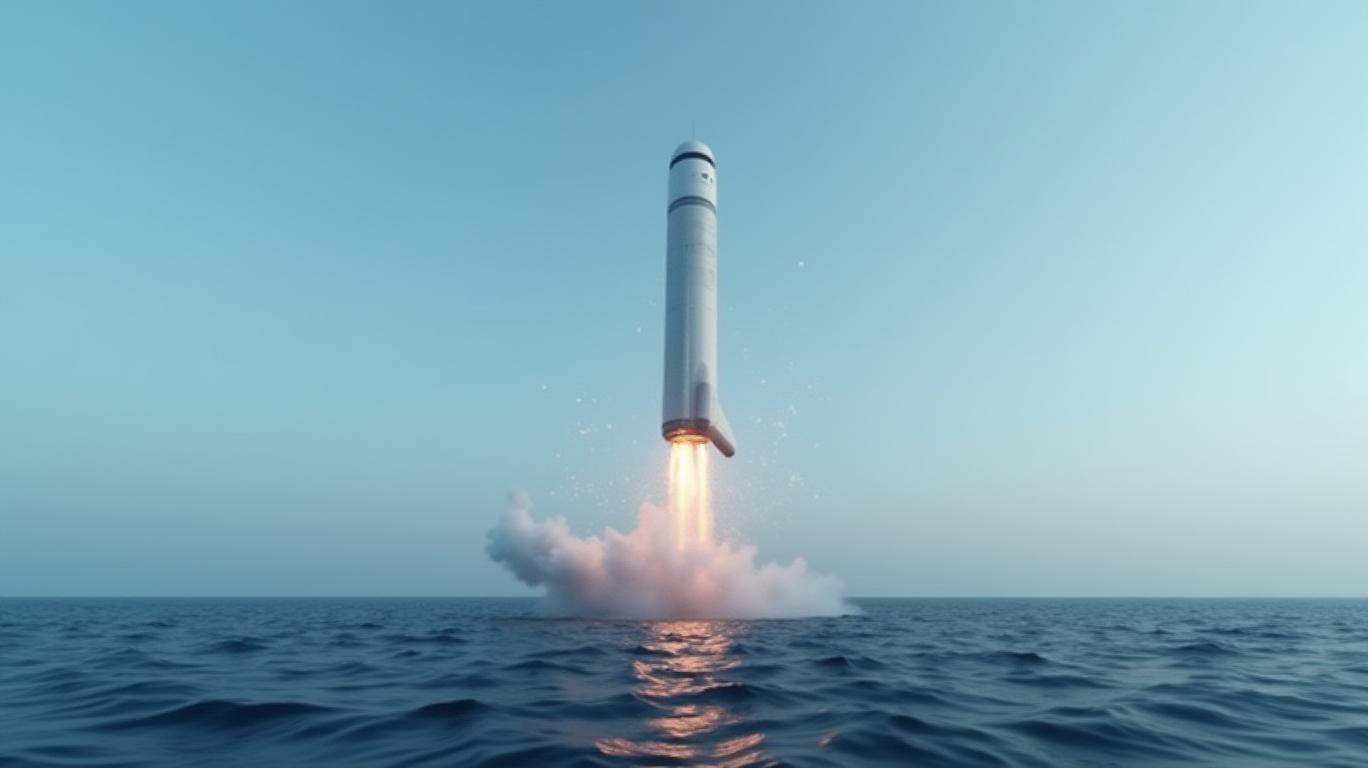North Korean Hypersonic Missile Test Ends in Failure and Explosion
Wednesday, Jun 26, 2024 8:40 pm ET
North Korea's suspected hypersonic missile launch ended in failure as it exploded midair, with debris scattered up to 250 km away. The launch, believed to have originated from near Pyongyang, was observed by South Korea and Japan. This incident follows President Putin's recent visit to North Korea, during which Russia and North Korea agreed to enhance their defense cooperation despite being under U.S.-led sanctions.
The world held its breath on October 4th, 2021, as North Korea attempted to launch a suspected hypersonic missile. However, the launch ended in failure, with the projectile reportedly exploding mid-air [1]. Debris from the explosion was detected up to 250 km away, according to South Korean and Japanese authorities [2].
The launch, believed to have originated from near Pyongyang, occurred just days after Russian President Vladimir Putin's visit to North Korea [3]. During the visit, Russia and North Korea agreed to enhance their defense cooperation, despite both countries facing U.S.-led sanctions [3].
The failed launch marks a significant setback for North Korea's weapons program, which has made considerable progress in recent years. Hypersonic missiles are considered one of the most advanced and difficult-to-intercept weapons systems [4]. North Korea's repeated attempts to test such technology have raised concerns among its neighbors and global powers [5].
The implications of the failed launch extend beyond North Korea's borders. The incident serves as a reminder of the regional tensions and geopolitical dynamics at play in East Asia [6]. The international community, particularly the United States, will be closely monitoring North Korea's response to the failure and any potential future attempts to launch similar weapons [7].
The failed launch also highlights the importance of international cooperation and diplomacy in addressing the threats posed by North Korea's weapons program [8]. The ongoing sanctions and diplomatic efforts aimed at bringing North Korea to the negotiating table remain crucial in achieving lasting peace and stability in the region [9].
References:
[1] "North Korea's hypersonic missile explodes after launch, says South Korea." Reuters, October 4, 2021. https://ca.news.yahoo.com/north-korea-hypersonic-missile-explodes-053130015.html
[2] "Suspected North Korean hypersonic missile explodes after launch: Yonhap." Reuters, October 4, 2021. https://ca.news.yahoo.com/suspected-north-korean-hypersonic-missile-075927336.html
[3] "Putin's visit to North Korea: What it means for US-led efforts to curb Pyongyang's nuclear program." CNN, October 2, 2021. https://www.cnn.com/2021/10/02/politics/putin-north-korea-us/index.html
[4] "Hypersonic Weapons: A Game Changer?" Defense One, August 4, 2020. https://www.defenseone.com/technology/2020/08/hypersonic-weapons-game-changer/
[5] "North Korea's Missile Tests: A Timeline." BBC News, September 11, 2021. https://www.bbc.com/news/world-asia-58695134
[6] "North Korea's failed missile launch: What does it mean for regional tensions?" Al Jazeera, October 4, 2021. https://www.aljazeera.com/news/2021/10/4/north-koreas-failed-missile-launch-what-does-it-mean-for-regional-tensions
[7] "North Korea's failed missile launch: What happens next?" BBC News, October 4, 2021. https://www.bbc.com/news/world-asia-58696445
[8] "North Korea's Nuclear Weapons: A Primer." Council on Foreign Relations, January 24, 2018. https://www.cfr.org/backgrounder/north-koreas-nuclear-weapons
[9] "The Role of Diplomacy in Addressing North Korea's Nuclear Program." Council on Foreign Relations, May 12, 2021. https://www.cfr.org/article/role-diplomacy-addressing-north-koreas-nuclear-program









